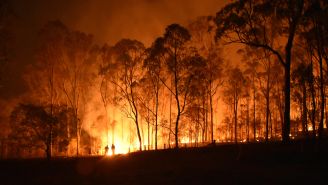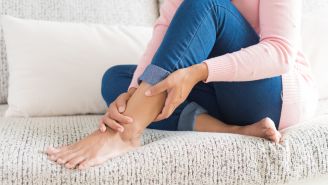Updated on June 28, 2024.
Carbon monoxide (CO) is the leading cause of poison-related deaths in the United States, responsible for more than 100,000 trips to the emergency room and 420 deaths each year.
Here’s what you should know about the dangers of carbon monoxide poisoning and tips for avoiding exposure.
What you need to know about CO
Carbon monoxide is a colorless, odorless gas, nearly impossible to detect by smell. The poisonous fumes are produced by anything that burns—oil, charcoal, gasoline, kerosene, propane, wood, and even tobacco.
When you breathe it in, the gas has toxic effects: It takes the place of oxygen in your bloodstream. Even more seriously, it acts as a direct toxin within cells, interrupting the cell’s ability to use oxygen. The carbon monoxide sticks to the hemoglobin in your blood, which gets in the way of transporting oxygen to your essential organs.
Your body’s essential organs, like the brain and heart, need oxygen at all times to survive. At its most extreme, CO poisoning can lead to disability, permanently impaired mental ability, and even death.
When is the risk most severe?
Carbon monoxide poisoning can happen at any time of the year. In a typical home, carbon monoxide poisoning is usually caused by a few common sources. These include a car left running in a closed garage, a broken furnace, or using a grill or other open heat source inside. Other frequent sources include gas ranges, stoves, fireplaces, and water heaters that use natural gas. Sometimes these appliances may be working improperly, or sometimes there is an issue with ventilation being inadequate or blocked.
While carbon monoxide poisoning can occur during any season, your risks increase during the winter months—December through February—when doors and windows are typically kept closed, and there are more reasons to use heat-generating appliances. Using them incorrectly can be very dangerous. For example, gas appliances like a gas oven should never be used to heat a room.
Symptoms
Early symptoms of CO poisoning are easily confused with the flu, which can make it difficult to interpret the gravity of the illness. These include symptoms like headache, dizziness, and vomiting. The main difference is that there will be no fever.
CO poisoning can also cause symptoms that usually aren’t associated with the flu. These include confusion, fatigue, irritability, and muscle weakness. The level of exposure—the amount of carbon monoxide and the amount of time exposed to the gas—determines the severity of the symptoms.
High levels of carbon monoxide exposure, or exposure that lasts for a long period of time, may result in fainting, loss of consciousness, seizures, coma, or even death. Infants and older adults may be at a higher risk of CO poisoning, as are people with lung and heart disease and people who smoke.
Treatment
Knowing the signs of CO poisoning is the first step to getting quick and effective treatment. The most important and most vital treatment for CO poisoning is oxygen. If you believe someone has been exposed to the gas, immediately move the person to fresh air and contact emergency assistance.
Once in the emergency department, concentrated oxygen may be administered through a face mask, intubation (breathing tube placed through the mouth and down the windpipe), or a ventilator (breathing machine). Hyperbaric oxygen treatment, where high-pressure oxygen is administered in a special chamber, may also be part of the treatment process. Because the air pressure is higher, more oxygen can move more quickly to where it’s needed in the body.
Symptoms should dissipate with oxygen treatment, but not everyone completely recovers after this period. Symptoms like memory and concentration problems that don’t go away after about two weeks may be permanent, and symptoms can return a week or two after they seem to stop.
While most people fully recover from milder cases of CO poisoning, more serious cases may lead to longer-term issues. As many as two out of three people recovering from severe cases of CO poisoning may have delayed neurological issues, including personality changes, blindness, and deafness. Research also suggests that acute CO poisoning may almost double the risk of death from all causes, and quality of life may be affected. It may also raise the risk of a heart attack in the future.
How to prevent exposure
The most important way to prevent exposure to poisonous carbon monoxide is to install adequate numbers of quality battery-operated (or battery-backup) CO detectors in your home. There should be one for each floor of the house, and one outside each sleeping area.
If possible, purchase interconnected CO alarms so that if one goes off, all of them go off, and you can be sure not to miss the sound, no matter where you are in the house. Be careful to follow the directions from the manufacturer about placement and how high to mount the detectors.
Once you’ve bought and installed detectors, don’t just set and forget them. You should test them each month and check the batteries twice a year. A great way to remember this is to check the batteries each time you change your clocks for Daylight Saving Time in the fall and spring.
Other important ways to stay safe year-round include:
- Make sure gas-, oil- and coal-burning appliances are maintained. Have them checked by a qualified technician on a yearly basis.
- Don’t run your car in a closed garage, even with the door open. Especially if the garage is attached to the house.
- When there is snow outside, before starting your vehicle, make sure the tailpipe isn’t blocked by snow.
- Use your grill outside only.
- Never use a generator or gasoline-powered tools indoors or in the garage.
- Ensure fuel-burning appliances are well-ventilated.
- Never use a gas range or oven for heating.
If you suspect anyone is in need of medical assistance from CO poisoning, you should get everyone out of the house or enclosed area right away. Then dial 911.
It’s also helpful to find out the correct non-emergency number to call if you suspect carbon monoxide in your home. Reach out to your local fire department or their non-emergency line to ask about the correct number to call, and then store that number somewhere easy to access. Being prepared ahead of time will help keep yourself and your loved ones safe.







